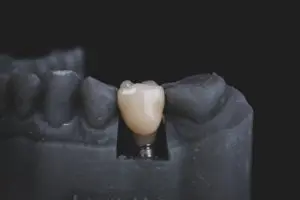Anatomy of Teeth and Dental Implants


A major part of preventative care is patient education. Understanding your teeth will allow you to prioritize your dental health — and with that in mind, let’s dive deeper into the anatomy of your teeth and what that means when seeking dental implants.
A Closer Look at the Anatomy of Teeth
- The crown is the part of your tooth that’s exposed. This is what you see above the gumline.
- The neck is between the crown and root. Located at the gum line, it is the dividing region of the tooth.
- The root is what anchors your tooth to your jawline. It is found below the gumline.
How Do Dental Implants Work and When Are They Needed?
Dental implants are recommended when you wish to replace damaged or missing teeth. These implants look and function like real teeth, allowing you to avoid dentures or bridgework.
Just like natural teeth, dental implants are made of parts, all of which serve a unique purpose. The three main parts include:
- The fixture — This is the small screw that is implanted into your jaw bone, acting as your tooth’s root. These fixtures are customizable depending on the size of the tooth (or teeth) that need to be replaced. Following implantation, the fixture will fuss to the surrounding bone. This results in a natural look and top functionality.
- The abutment — Think of the abutment as the neck, as it sits between the fixture and the prosthetic. Again, there are several types available, ensuring the most natural appearance possible.
- The dental prosthetic — This is the visible portion of the dental implant. When replacing a tooth or two, these are what’s referred to as dental crowns. You can work with your implant dentist one-on-one to identify what you need.
Looking for the Top Dental Implants Virginia Has to Offer?
Content found on this blog is intended for educational purposes only and should not be used as a substitute for professional judgement, advice, diagnosis, or treatment. Please speak with a professional if you have concerns about your oral health.